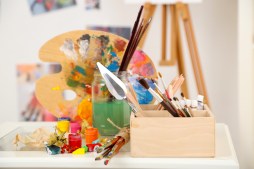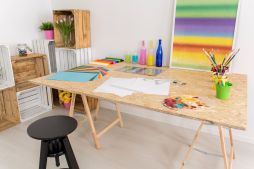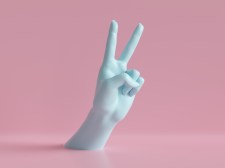Enhance Your Paintings by Mastering Texture Creation with a Palette Knife

Exploring the world of painting with a palette knife opens up exciting possibilities for adding texture, depth, and boldness to your artwork. Unlike traditional brush techniques, palette knife painting allows artists to create dynamic surfaces and unique visual effects that can truly enhance the impact of their paintings. In this article, we’ll delve into essential techniques and tips for mastering texture creation using a palette knife.
Understanding the Palette Knife and Its Uses
A palette knife is a versatile tool originally designed for mixing paint on a palette, but it has become popular among artists for applying paint directly onto the canvas. Typically made of metal with a flexible blade and a comfortable handle, it enables painters to spread thick layers of paint or scrape away areas to reveal underlying colors. Unlike brushes, palette knives don’t absorb paint; instead, they manipulate it on the surface to create striking textures.
Basic Techniques for Painting with a Palette Knife
Some fundamental techniques include spreading, scraping, dabbing, and layering. Spreading involves sweeping paint across the canvas in smooth or uneven strokes that build up texture. Scraping can remove excess paint or create sharp lines by dragging the edge of the knife over wet layers. Dabbing allows you to add small patches of color with distinct edges, while layering means applying multiple coats that add dimension and complexity.
Creating Textures: From Thick Impasto to Subtle Effects
Palette knives excel at impasto painting—a technique where thick applications of paint are used so that strokes stand out from the surface. You can achieve dramatic ridges and peaks by loading your knife heavily before applying it to the canvas. For more subtle textures, use less pressure and thinner amounts of paint or mix mediums like gel or modeling paste with your colors to adjust consistency.
Choosing Paints and Mediums for Optimal Results
Oil paints are traditionally favored when working with palette knives because their slow drying time allows ample manipulation on canvas. However, acrylics have become increasingly popular due to their quick drying times and compatibility with various mediums that extend open time or thicken consistency—ideal for textural effects. Experimenting with different brands and mediums will help you find what suits your style best.
Tips for Cleaning and Maintaining Your Palette Knives
To keep your tools in good condition after each session, clean them promptly with warm water (if using acrylics) or appropriate solvents (for oils). Avoid letting dried paint accumulate as it can damage the blade’s flexibility over time. Store knives safely in protective sleeves or holders so edges remain intact—this ensures consistent application quality every time you pick them up.
Mastering painting techniques with a palette knife opens up new creative avenues for artists seeking rich textures and expressive styles beyond traditional brushes alone. By understanding tool handling methods alongside suitable materials selection—and proper care—you’ll be able to confidently enhance your paintings through compelling texture creation.
This text was generated using a large language model, and select text has been reviewed and moderated for purposes such as readability.











